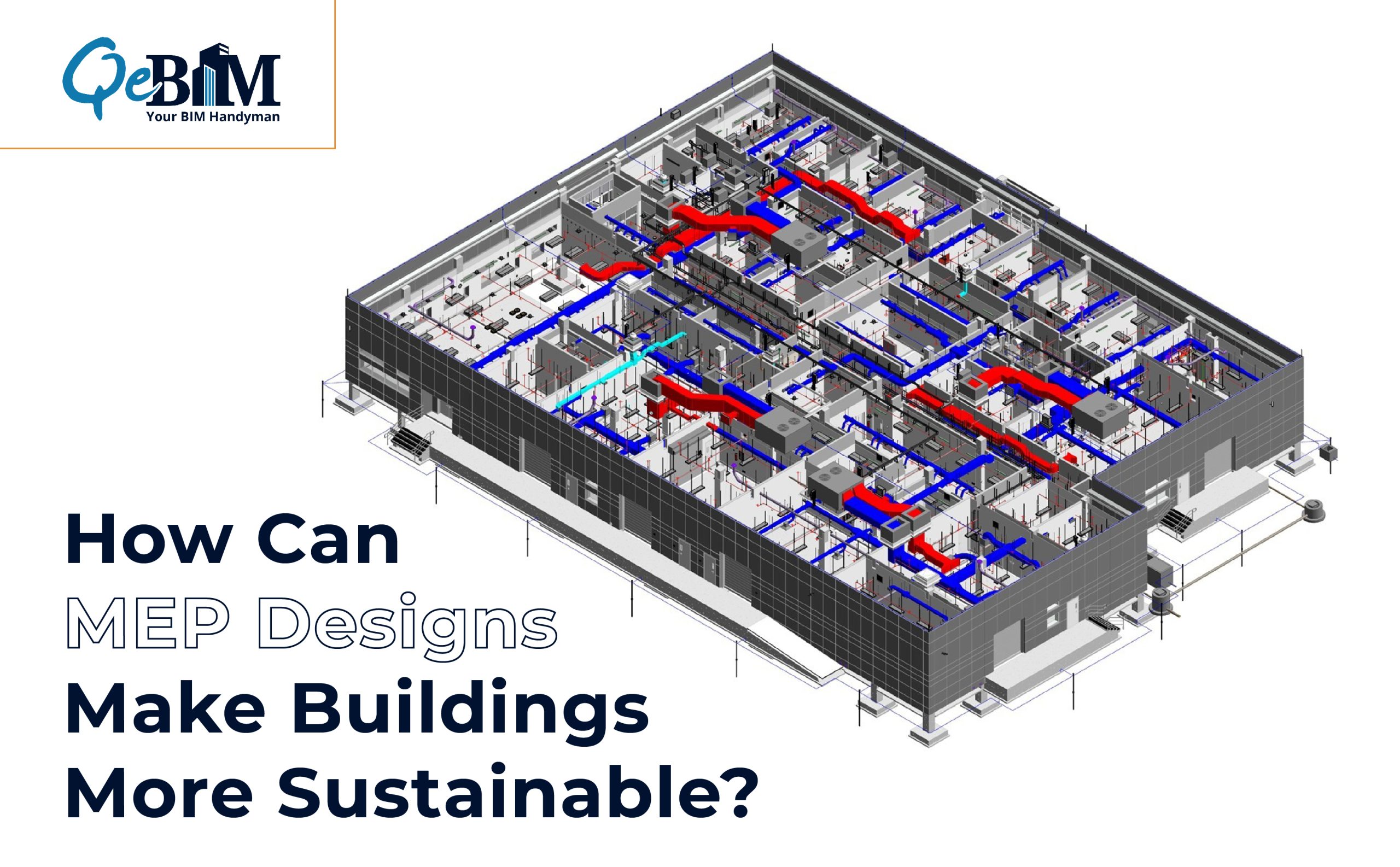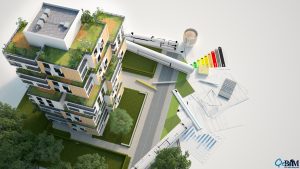How Can MEP Designs Make Buildings More Sustainable?

Sustainable building designs or green building designs should be an integral part of modern/contemporary construction as it considers human comfort, minimizing the negative environmental impact. Many National and State governments across borders are regulating resource management, encouraging construction incorporating natural alternatives for energy and use of sustainable building materials and optimal Water and other resource maintenance methods. Since, Mechanical, Electrical and Plumbing components are responsible for efficient Water and energy consumption while building construction, designing the same effectively can create a suitable environment, improving many aspects like air and water quality, etc.
With sustainability becoming necessary to preserve the environment and make our surroundings a better place to live in, incorporating MEP engineering designs in building construction is a must. Effective MEP Design Services ensure the optimum utilization and maintenance of resources, reducing waste. MEP engineering designs are also becoming mandatory to get building approvals from government bodies. Also, there are various ways MEP designs can help build a sustainable structure.

How Can MEP Designs be Proven Beneficial for Sustainable Construction?
Be it a new construction design or renovating an old one, MEP Drafting Services addresses all your criteria to build a sustainable structure.
1) Building Energy Efficient Structure: The buildings and construction sectors together use 30% of the total global final energy consumption by lighting and HVAC systems. To minimize these, effective electrical and HVAC design services should be implemented as listed below:
a) Use eco-friendly lighting.
b) Use of motion sensors for lighting fixtures.
c) Design buildings that allow more natural light indoors, preventing less lighting consumption.
d) Consider integrating renewable energy sources, like solar systems, to ensure optimal use of electrical systems.
e) Consider using AI technology while designing HVAC systems to automate the process and increase efficiency.
f) Leverage technology to adjust heating and ventilations, minimizing energy losses.
g) Follow building standards and codes for energy efficiency to make building HVAC systems more proficient.
2) Designing Water Conservation Structure: As per the CWMI report, the water demand will surpass its supply by 2050; therefore, water preservation and conservation have become the need of the hour.
a) Using less water consumption equipment in residential and commercial complexes such as Water metering, Low water flow faucets, infrared sensors to turn off the tap when not in use, Water saving showerheads, Pressure reducing valves, etc.
b) Use solar, gas water systems, or electric heat pumps as an efficient water heating system.
c) Implementing Grey water recycling systems to collect wastewater from kitchens, washing machines, etc., recycle it, and reuse it for irrigation.
d) Designing an innovative plumbing system for sewage water treatment and management.
e) Designing buildings in such a way as to implement Rainwater harvesting wherever applicable.
3) Designing Mechanical Alternatives: Use advanced technologies to plan and design mechanical components with improved hardware. The MEP BIM Services can help enhance sustainability workflows, to operate, manage and maintain engineering components for reduced carbon emission.
a) Integrate wind, solar and geothermal energy sources to reduce carbon footprints.
b) Reduce energy consumption by daylight harvesting.
c) Design double-glazed windows for insulation.
d) Use of High Coefficient of Performance equipment to reduce power consumption.
4) Choosing Sustainable Materials:
a) Choose materials of the appropriate size and type in support of environmental factors.
b) Avoid transportation using local materials.
c) Use recycled materials for in and out construction.
d) Prevent usage of AC by designing and installing light-colored roof material.
e) Use Green materials like Straw bale, earthen materials, insulated concrete, etc., the most.
5) Increased Building Lifecycle: MEP design system can smoothen the operation and maintenance to a greater extent in the long run.
a) Choosing sustainable materials to design an MEP system can be more affordable to maintain.
b) Use ambient energy sources rather than purchased energy to keep the building running efficiently.
MEP Design as a Value-Added Service for Sustainability
MEP designs are not only good for the environment but also good for your wallets too. Approach a good MEP design service provider like QeBIM to uncover the new design model with sustainability initiatives. Our MEP designers provide fully efficient building models using BIM to give you an eco-friendly, profitable design. We implement the right mix of technologies, techniques, and practices to design buildings with reduced carbon footprints during implementation. Leverage our MEP design and drafting services to sync well with the green building initiative.